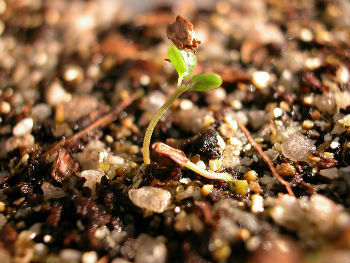In biology, reproduction is the ability of living beings to generate offspring. Therefore, the reproductive mechanism is mainly important to continue the species and increase the number of individuals.
This replication process is vital and can occur in different ways in different forms of life. Thus, genetically identical organisms or with characteristics inherited from their parents can be originated.
The ability to reproduce is one of the characteristics that distinguishes living from non-living beings, as all living beings are capable of generating offspring.
Types of reproduction
The different types of reproduction fall into two large groups: sexual and asexual reproduction.
asexual reproduction
Asexual reproduction occurs from just one living being and forms genetically identical descendants, that is, clones.
Basically, a cell, a part of the body or the individual divides to generate a new being. This process is simpler and faster than sexual reproduction.
This single parental being can reproduce by:
- Sporulation: the spores, specialized reproductive cells, are released and under favorable environmental conditions develop a new being
- budding: sprouts are formed on the surface of the living being and separate from the body to produce the new organism
- fragmentation: a part of the individual separates from his body and a new organism emerges from it
- binary division: a being splits in half and gives rise to two descendants, but for that he ceases to exist
Learn more about asexual reproduction.
sexual reproduction
The main feature of this type of reproduction is the genetic variability of descendants and is observed in most animals and some plant species. For this to occur it is necessary for the reproductive cells of individuals, male and female, to meet.
Sexual reproduction basically consists of the formation of specialized reproductive cells, called gametes, which will unite in a process called fertilization. There is formation of an egg cell or zygote, which is the precursor of a new being with the mixture of genetic material.
Learn more about sexual reproduction.
Reproduction Examples
Although the two large groups of means of reproduction are sexual and asexual, living beings present some differences when generating their descendants. Check out some examples.
animal reproduction
Animals perform both sexual and asexual reproduction. For example, the starfish is an echinoderm animal that reproduces by fragmentation, which is an asexual process. In sexual reproduction, fertilization to generate individuals can be internal or external. Internal fertilization takes place inside the body, while external fertilization takes place in a favorable environment.
Sperm, sex cells of males, are released from their genitals or copulators into the female's body.
The embryo, which corresponds to the individual's first stage of life, can develop in different ways. Check out some examples below.
- Embryonic development within a egg, characteristic of oviparous animals. Turtles, birds and ducks use this means of reproduction.
- Embryonic development within the mother's body, characteristic of live-bearing animals. This is the means of reproduction used by human beings.
- Embryonic development in an egg, which is kept inside the mother's body, characteristic of ovoviviparous animals. This type of reproduction can be seen in seahorses.
plant reproduction
Plants can perform both sexual and asexual reproduction. For example, in pteridophytes, asexual reproduction occurs by budding. The flowers, present in the group of angiosperms, are responsible for sexual reproduction and depend on pollination.
Basically, the pollination process is responsible for transferring pollen to the plant's reproductive system, from the male part of the flower to the female part. Gametes, specialized sex cells, are produced in the gametangia, which are called stamens in males and carpels in females.
Pollination can be:
- Direct pollination: self-pollination that takes place on the same flower
- Indirect pollination: occurs between flowers of the same plant
- Cross-pollination: occurs between flowers of different plants
Fungi reproduction
You fungi they reproduce by sexual or asexual reproduction. Asexual reproduction can occur by:
- Fragmentation: occurs when the mycelium fragments and gives rise to new mycelia
- Budding: the formed buds (gemmules) may separate from the individual or remain attached to their body
- Sporulation: Asexual spores form by mitosis and cell division occurs. With the germination of spores, genetically identical organisms are formed.
Sexual reproduction also involves spores, small structures produced by these beings, and can be divided into three phases: Plasmogamy (fusion of protoplasm); Karyogamy (formation of a diploid nucleus) and Meiosis (formation of two haploid nuclei).
Bacteria reproduction
At bacteria perform asexual reproduction. Two identical bacteria are generated through binary division, also called bipartition or cissiparity.
Basically, the chromosome of a precursor bacteria is duplicated and then the cell splits in half, generating bacteria quickly, which explains the bacterial proliferation in infections, by example.
There are also bacterial spores. Under unfavorable conditions, endospores are formed, structures such as interrupted metabolism and thickening of the envelope to resist the environment. The bacteria can remain inactive for a long period until the right conditions return and the structure rehydrates, germinates and produces a cell identical to the original.
Protozoan reproduction
You protozoa they reproduce in a sexual and asexual way. Asexual reproduction is what commonly occurs in these organisms and the mechanisms are binary division, where a cell divides generating two identical cells, and multiple division, which consists of many cell divisions, mitosis, multiplying the nucleus and generating new ones. cells.
Sexual reproduction occurs in the conjugation carried out by paramecia, which consists in the exchange of genetic material between two individuals.
Virus Reproduction
You virus to reproduce, they need to install themselves in a cell to use its resources, which is why they are mandatory intracellular parasites. These organisms can break through a cell wall, enter and replicate, or just inject their genome into the host cell.
Also read about the differences between the sexual and asexual reproduction.



